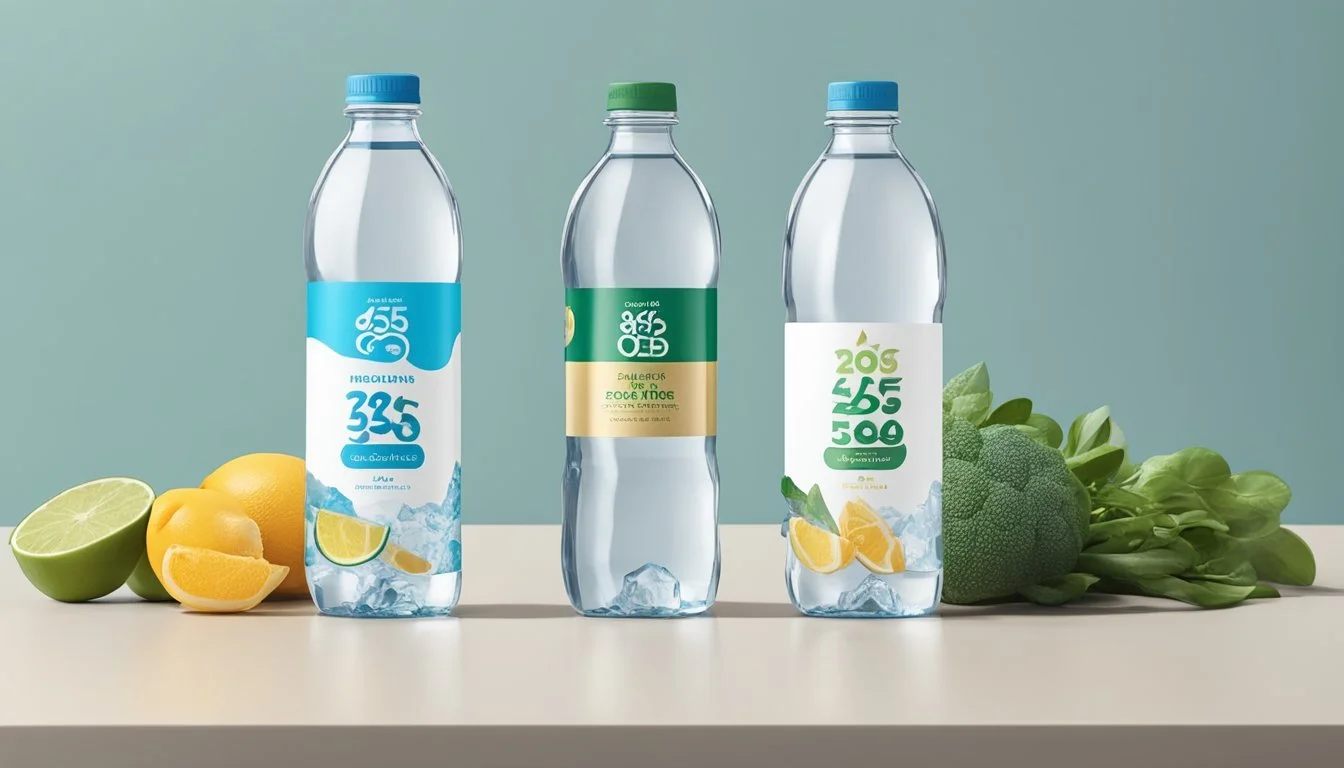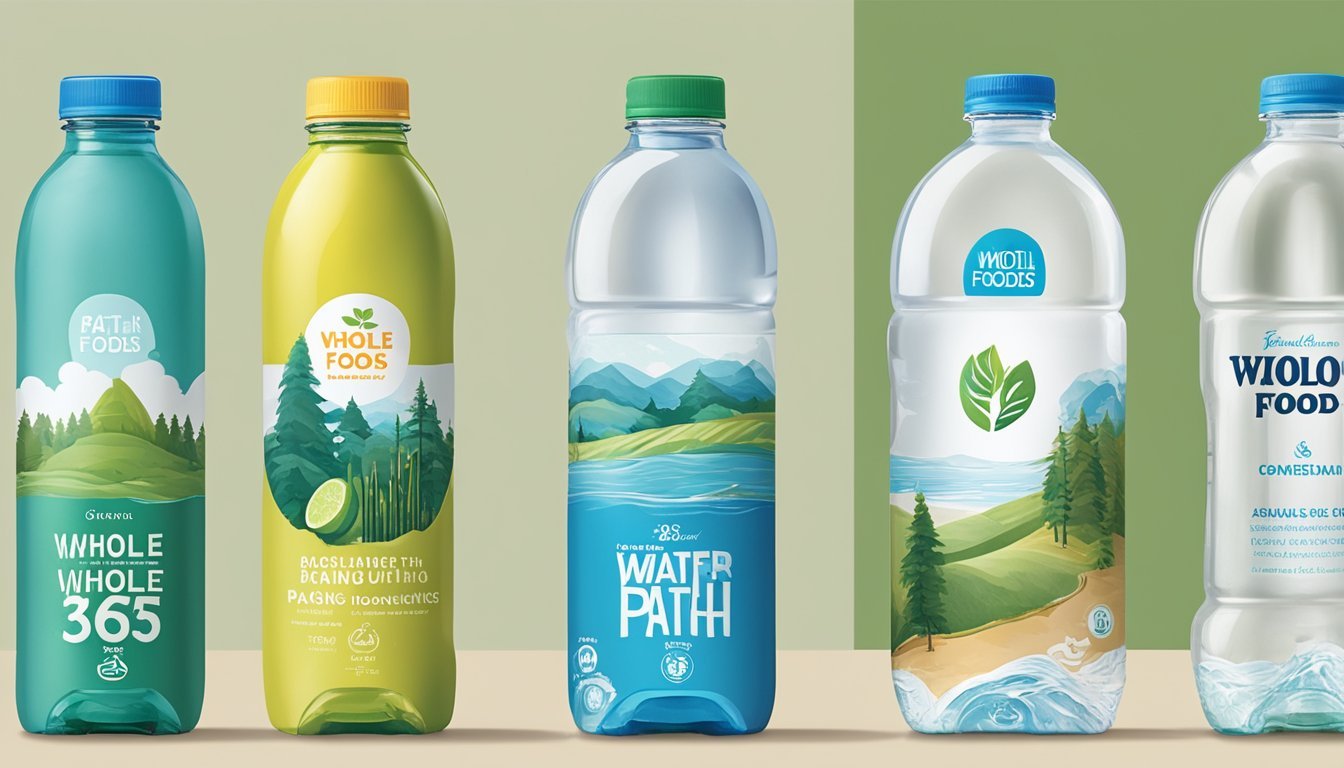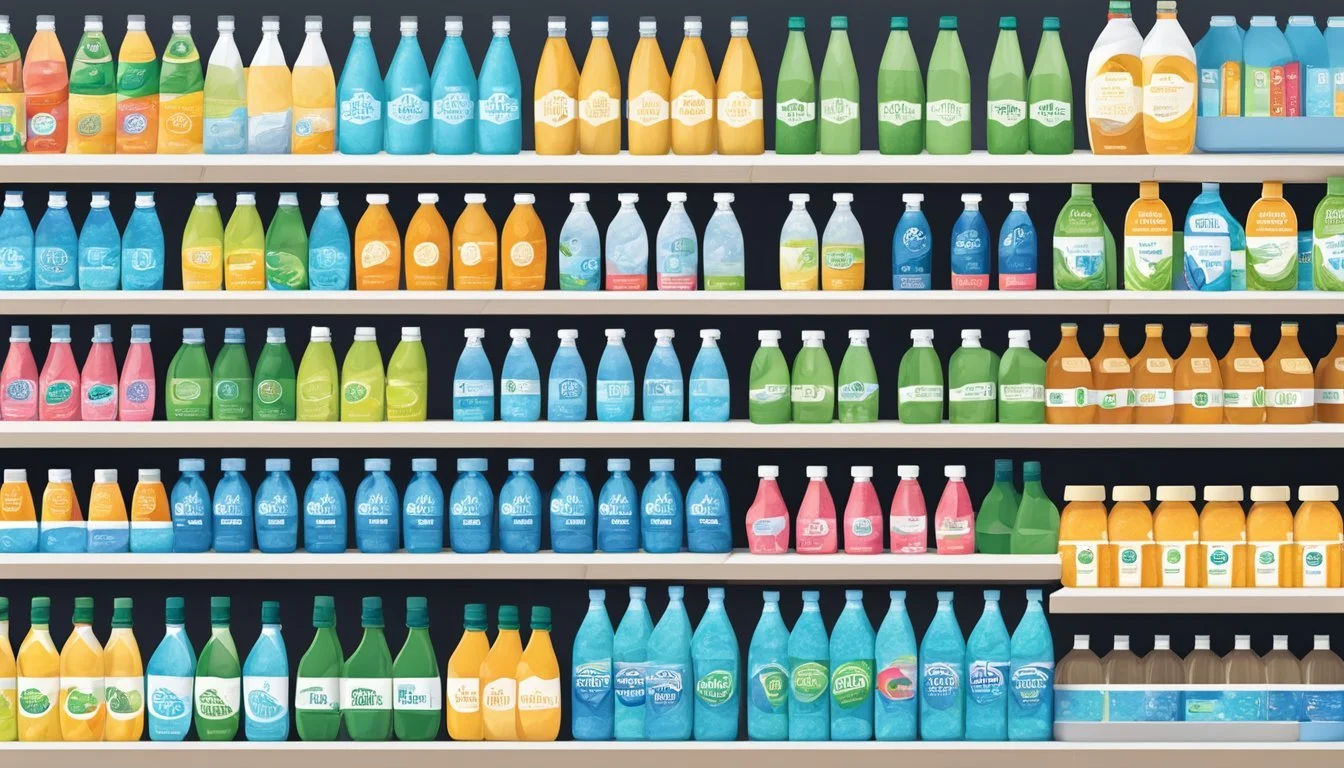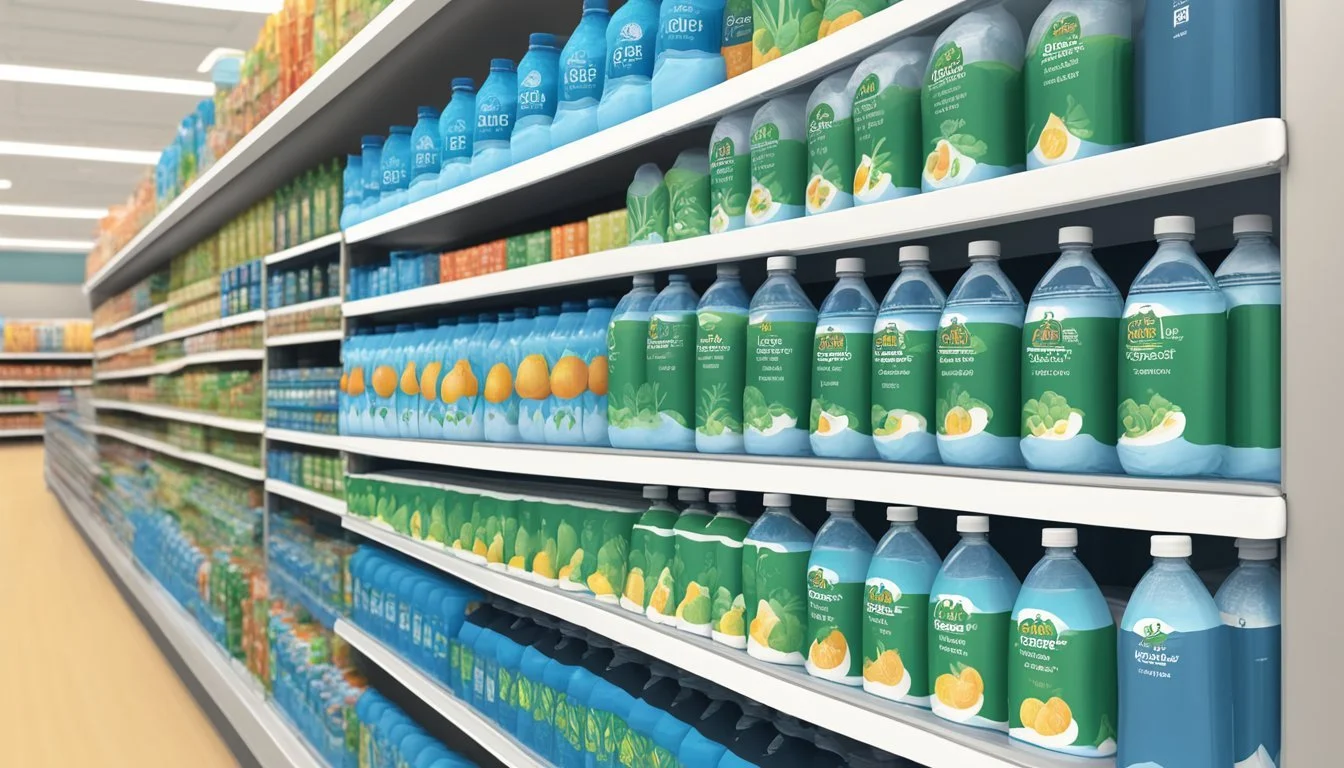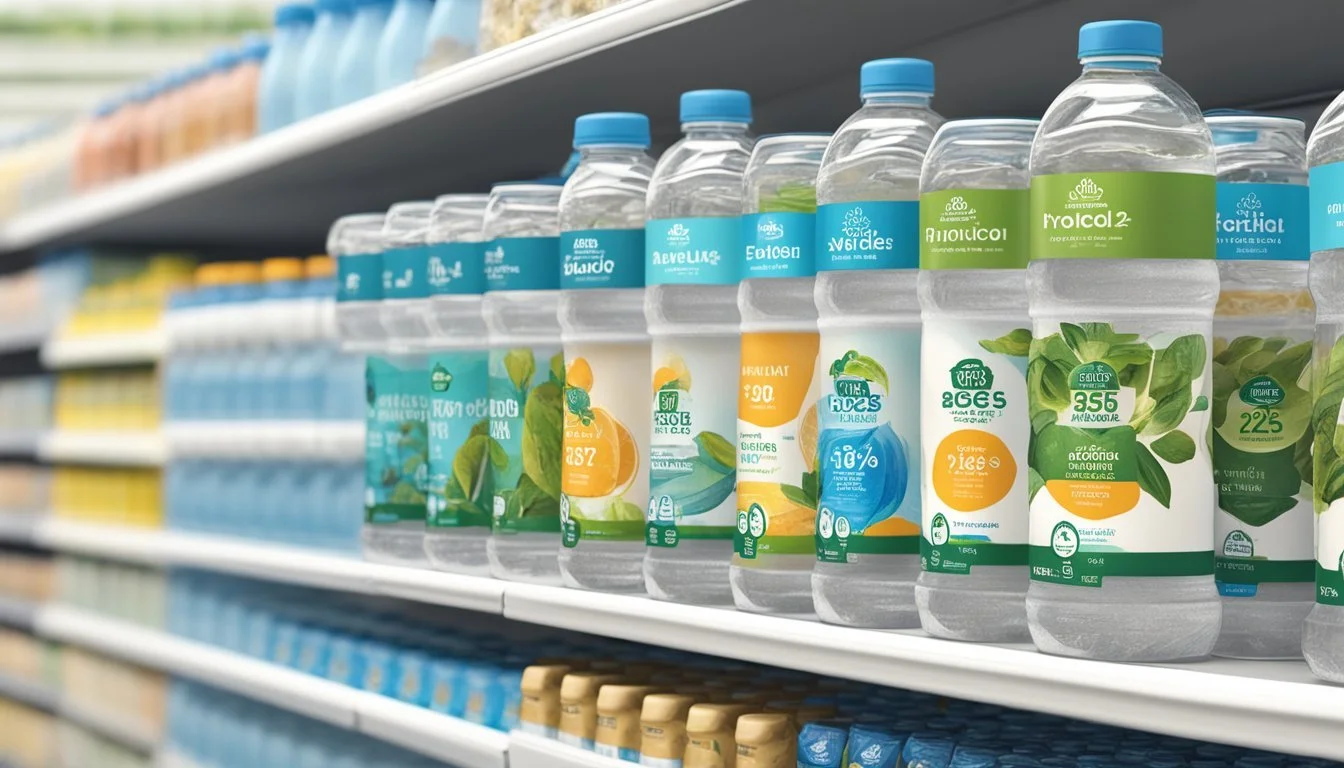Path vs. Whole Foods 365
Comparing Bottled Water Quality
Choosing the right bottled water can be a surprisingly complex decision. Path Water and Whole Foods 365 are two popular options that stand out for different reasons. Path Water emphasizes sustainability with its reusable aluminum bottles, while Whole Foods 365 offers a diverse range of water types, including alkaline and spring water.
Path Water provides a more eco-friendly choice with its thoughtfully designed reusable bottles. This brand appeals to those who prioritize environmental impact without compromising on taste. In contrast, Whole Foods 365 delivers affordability alongside a variety of water options, catering to consumers looking for specific benefits like ionized alkaline water.
Ultimately, the better choice between Path and Whole Foods 365 depends on what the consumer values more: sustainability or variety and price. This blog post will explore more deeply into these differences, helping you make an informed choice.
Overview of Bottled Water Industry
The bottled water industry has seen significant growth globally. It is projected to continue expanding, driven by rising health concerns and the need for safe drinking water.
The U.S. bottled water market reached $44.6 billion in 2023 and is growing at a compound annual growth rate (CAGR) of 5.8%. High demand exists for sanitary packaged goods, minimizing the risk of gastrointestinal disorders from contaminated water.
In 2022, the global bottled water market was valued at $303.95 billion with a CAGR of 5.9%. This growth is influenced by increasing awareness regarding health problems like gastrointestinal diseases.
Bottled water brands such as Whole Foods' 365 Spring Water and Ice Canyon Spring Water are popular in the U.S. However, instances of contaminants like PFAS in some bottled waters have raised concerns.
The International Bottled Water Association (IBWA) plays a crucial role in ensuring the quality and safety of bottled water. They advocate for rigorous standards and practices within the industry.
Here are some key points about the bottled water industry:
High demand due to health concerns
Significant market growth in the U.S. and globally
Popular brands include Whole Foods' 365 Spring Water
Regulations enforced by organizations like the IBWA
The IBWA’s standards are integral to maintaining consumer trust and ensuring the safety of bottled waters. This helps in meeting the increasing consumer demand for clean and safe drinking water.
Brands in Focus: Path and Whole Foods 365
When choosing between Path Water and Whole Foods 365 Spring Water, it's essential to understand the brand profiles, historical context, and missions of both companies. This helps consumers make informed decisions about their bottled water choices.
Path Water: Brand Profile
Path Water positions itself as a sustainable bottled water brand. Known for its reusable aluminum bottles, Path Water focuses on reducing plastic waste and promoting environmental consciousness. The company offers purified water sourced and filtered in the United States, ensuring a high level of quality and purity.
They market portability and reuse, allowing the bottles to be refilled countless times. This positions Path Water not just as a beverage but as part of a lifestyle promoting sustainability.
Whole Foods 365 Spring Water: Brand Profile
Whole Foods' 365 Spring Water is part of the 365 brand, which includes various grocery items aimed at providing value and quality without premium prices. The spring water is sourced from natural springs and is marketed for its purity and taste.
Whole Foods emphasizes transparency and eco-friendliness across its product lines. The 365 brand often attracts consumers looking for organic and natural products, aligning with Whole Foods' overall mission to promote health and sustainability.
Comparing Brand Histories and Missions
Path Water was founded with a mission to combat single-use plastics by offering a reusable alternative. Their focus on eco-friendly practices extends beyond the product, influencing their corporate actions and marketing strategies. The brand appeals to environmentally conscious consumers who prioritize sustainability.
Whole Foods 365, introduced by Whole Foods Market, aims to provide affordable, high-quality products across various categories. The 365 Spring Water reflects Whole Foods' broader mission to support health, sustainability, and organic products. Even as part of a larger retail strategy, the spring water maintains its commitment to quality and environmental responsibility.
In many ways, both brands cater to a demographic that values purity, quality, and sustainability, though each approaches these goals in different manners. Path Water prioritizes reusability and reduced plastic, while Whole Foods 365 Spring Water focuses on accessibility and natural sourcing.
Water Quality and Safety Standards
Ensuring water quality and safety standards involves compliance with regulatory guidelines, adherence to voluntary industry standards, and independent assessments by credible organizations.
Regulatory Compliance: FDA and EPA
The FDA oversees bottled water regulations in the U.S., ensuring product safety and proper labeling. They set limits for various contaminants, including heavy metals like lead, cadmium, and mercury.
Meanwhile, the EPA regulates tap water standards. Both agencies maintain stringent guidelines for acceptable contaminant levels, including arsenic and PFAS, ensuring water does not pose health risks. Companies must conduct regular testing to comply with these standards, which helps ensure consumer safety.
IBWA's Voluntary Guidance
The International Bottled Water Association (IBWA) provides additional guidelines beyond federal regulations. Member companies voluntarily follow these, focusing on stringent testing, plant inspections, and quality assurance protocols.
IBWA standards incorporate guidelines for reducing contaminants such as lead, cadmium, and mercury. By adhering to IBWA standards, brands demonstrate a commitment to higher safety and quality.
Assessment by Consumer Reports
Consumer Reports independently evaluates bottled water safety, regularly testing for contaminants like PFAS, arsenic, and other pollutants. Their evaluations often surpass FDA and EPA requirements, providing consumers with a clear picture of water quality.
Recent tests revealed detectable PFAS in several brands, exceeding CR's recommended limits. Brands like Whole Foods 365 were highlighted for elevated arsenic levels, just under the federal cap. These insights guide consumers in making safer choices.
Nutritional Comparison
When choosing between Path and Whole Foods 365 bottled waters, examining their nutritional differences can guide a healthier choice. Key aspects to focus on include the mineral content and electrolytes, critical for hydration and overall health.
Mineral Content and Health Benefits
Path: Path water is sourced from natural springs, reputed for its rich mineral content. Minerals like magnesium, calcium, and potassium are present in appreciable amounts. These minerals play crucial roles in regulating body functions, enhancing bone strength, and ensuring proper muscle function.
Whole Foods 365: Whole Foods 365 offers various types of water, including spring and alkaline. The 365 Everyday Value Spring Water contains naturally occurring minerals, though in fewer quantities compared to Path. Despite this, it still provides essential elements like calcium and magnesium, albeit in lower concentrations.
Comparison: Path offers higher mineral concentrations, which may benefit those looking for enhanced nutritional support. Whole Foods 365, while still beneficial, may be preferable for consumers seeking a more neutral taste with moderate health benefits.
Presence of Electrolytes and Hydration Efficacy
Path: Path water does not explicitly market itself as an electrolyte-enhanced beverage; however, the natural minerals present provide a decent electrolyte profile. This supports effective hydration, muscle function, and overall body balance.
Whole Foods 365: The 365 Everyday Value Electrolyte Water is specifically enhanced with electrolytes like sodium, potassium, and magnesium. These added electrolytes significantly boost hydration efficacy by helping the body retain fluids better and recover quicker from physical exertion.
Comparison: Path water relies on its natural mineral content for electrolytes, offering a balanced, natural hydration solution. Conversely, Whole Foods 365 Electrolyte Water provides targeted hydration benefits, ideal for athletes or those with higher hydration needs.
Path water appeals to those preferring naturally sourced hydration, whereas Whole Foods 365 caters more effectively to high-activity consumers needing quick and efficient rehydration.
Environmental Impact and Sustainability
Assessing the environmental impact and sustainability of Path and Whole Foods 365 bottled water involves examining their bottle production and recycling, water source conservation, and brand initiatives for environmental protection.
Bottles Production and Recycling
Path uses aluminum bottles, which are highly recyclable and have a reduced carbon footprint compared to plastic. Whole Foods 365, primarily using plastic and sometimes glass, offers mixed results. While glass bottles are recyclable, they are heavier, increasing transportation emissions. The Environmental Protection Agency (EPA) notes that recycling rates for plastic bottles remain low, exacerbating landfill concerns. Path's choice of aluminum targets both consumer convenience and environmental benefits.
Water Source Conservation
Whole Foods 365 sources its spring water from natural springs, with specific practices governed by local regulations to ensure sustainable yield. This approach supports public health by maintaining clean water supplies. In contrast, Path sources purified water, often undergoing rigorous treatments. Although treated water may reduce the strain on natural sources, it involves energy-intensive processes. Both brands prioritize minimal environmental disruption, yet Path's method may decrease direct impact on natural water sources.
Brand Initiatives for Environmental Protection
Path incorporates ambitious environmental goals within its corporate strategy. They emphasize reducing carbon emissions and promoting refillable bottles. Whole Foods 365 has implemented eco-friendly practices, such as monitoring environmental impact and supporting sustainability certifications. However, Path's alignment with broader environmental initiatives tends to be more comprehensive. Both brands aim to influence consumer behavior towards more sustainable choices and actively participate in environmental protection efforts.
Taste Profiles
Comparing the taste of Path and Whole Foods 365 bottled waters involves analyzing consumer preferences, still versus carbonated varieties, and the significance of water sources. Each aspect plays a crucial role in determining the overall taste experience for consumers.
Consumer Preferences and Water Sommeliers
Consumer preferences in bottled water often center around factors such as flavor, mouthfeel, and aftertaste. Path bottled water is often praised for its clean, crisp taste with a smooth finish. The company's decision to use purified water ensures a neutral flavor profile that many consumers find appealing.
Meanwhile, Whole Foods 365 offers a range of water types, including spring and alkaline water, each with unique characteristics. The spring water is described as having a sour and dry aftertaste, which can be polarizing. Alkaline water, ionized to pH 9.5+, provides a slightly more satisfying taste to some consumers.
Water sommeliers—experts in the taste of water—often highlight the subtle differences between these brands. Path's consistent purification process is likened to a balanced, unadulterated taste, making it a favorite among purists. Whole Foods 365 brings variety to the table, offering distinct taste experiences for different preferences.
Comparing Still and Carbonated Varieties
Both Path and Whole Foods 365 predominantly offer still water options. Path's still water is well-regarded for its refreshing quality without any lingering aftertaste. Its appeal lies in its simplicity, providing hydration without additional flavors.
Whole Foods 365 diversifies its options. Their still water, although varied in type, caters to different tastes. The electrolyte and alkaline varieties add subtle taste differences appreciated by those looking for mild flavor enhancements.
While carbonated options are less common, any experimentation with sparkling varieties can alter the taste experience significantly. Carbonation can add a sharpness to the water, which some enjoy, though this isn't a prominent feature for either brand currently.
The Significance of Source in Taste
The origin of the water source plays a critical role in its taste. Path water utilizes a rigorous purification process, ensuring a taste profile free from impurities and consistent across all bottles. This consistency makes Path a reliable choice for those who prefer a predictable taste.
Whole Foods 365 sources its water from various locations, affecting the final taste. The spring water, for instance, comes from natural springs which can have a distinct taste influenced by the local geology. This often results in a sour and dry aftertaste, not always to everyone's liking. Their alkaline water, adjusted to a higher pH, tends to offer a smoother experience.
Understanding the source helps consumers predict potential taste profiles, whether they prefer the stable, neutral taste of Path or the varied, sometimes complex profiles from Whole Foods 365.
Affordability and Access
Affordability and access to bottled water are vital for consumers. Here is a detailed examination of both the price points and availability of Path vs. Whole Foods 365 bottled water.
Price Point Comparison
Path water bottles are often marketed at a higher price point due to their reusable aluminum design. Typically, a 600 mL bottle costs around $2.99. This price reflects the reusable nature, which can be more economical in the long run.
In comparison, Whole Foods 365 offers a variety of bottled waters:
Alkaline Water (1L): $1.29
Electrolyte Water (500 mL): $0.79
Spring Water (500 mL): $0.69
Whole Foods 365 provides a more budget-friendly option for single-use bottles, appealing to cost-conscious consumers.
Distribution: Availability in Stores and Online
Path water is widely available both in physical stores and online. They are sold in major retailers, convenience stores, and e-commerce platforms like Amazon. This broad distribution ensures that consumers can easily find Path water.
Whole Foods 365 water is primarily sold in Whole Foods Market stores. Some varieties may also be available through the Whole Foods section on Amazon, especially for Amazon Prime users. This slightly limits access compared to Path, but still offers convenience through online ordering and local availability in Whole Foods stores.
Consumer Experience
When comparing Path and Whole Foods 365 bottled water, aspects such as packaging, design, and customer feedback play significant roles. Each brand's approach to these elements influences consumer perception and preference.
Packaging and Design
Path's packaging stands out with its sleek, reusable aluminum bottles. This design is both environmentally friendly and visually appealing. Users often appreciate the durability and aesthetics of Path bottles, which can be refilled multiple times.
In contrast, Whole Foods 365 opts for simple and practical plastic bottles. While not as stylish as Path, the functional design ensures reliability. The label is minimalist, catering to consumers who prefer straightforward and no-nonsense packaging. Additionally, the cost-effectiveness of these bottles is a key advantage that appeals to budget-conscious shoppers.
Customer Reviews and Testimonials
Path has garnered praise in customer reviews, with consumers frequently highlighting the refreshing taste and high quality of the water. Testimonials often mention the added value of the reusable bottle, contributing to a positive environmental impact.
Whole Foods 365, as reported by the Los Angeles Times, receives mixed feedback. Some users appreciate the affordability and consistent quality, though others note a dry aftertaste that detracts from the drinking experience. Despite this, many consumers trust the brand for its convenience and accessibility.
Ultimately, both Path and Whole Foods 365 have their strengths, with Path excelling in design and environmental impact, and Whole Foods 365 offering practicality and affordability.
More About Path
Mountain Valley Spring Water vs Path: Which Bottled Water is Better?
Path vs Whole Foods Italian Still Mineral water: Which Bottled Water is Better?
More About Whole Foods 365
Acqua Pana vs Whole Foods 365: Which Bottled Water is Better?
Alkaline88 vs Whole Foods 365: Which Bottled Water is Better?
Antipodes vs Whole Foods 365: Which Bottled Water is Better?
Aqua Carpatica vs Whole Foods 365: Which Bottled Water is Better?
Arrowhead vs Whole Foods 365: Which Bottled Water is Better?
Big Chill vs Whole Foods 365: Which Bottled Water is Better?
Boxed Water vs Whole Foods 365: Which Bottled Water is Better?
Cascade Mountain vs Whole Foods 365: Which Bottled Water is Better?
Castle Rock vs Whole Foods 365: Which Bottled Water is Better?
Core Hydration vs Whole Foods 365: Which Bottled Water is Better?
Crystal Geyser vs Whole Foods 365: Which Bottled Water is Better?
Deer Park vs Whole Foods 365: Which Bottled Water is Better?
Hawaii Volcanic vs Whole Foods 365: Which Bottled Water is Better?
Hawaiian Springs vs Whole Foods 365: Which Bottled Water is Better?
Ice Mountain vs Whole Foods 365: Which Bottled Water is Better?
Icelandic Glacial vs Whole Foods 365: Which Bottled Water is Better?
Just Water vs Whole Foods 365: Which Bottled Water is Better?
Liquid Death vs Whole Foods 365: Which Bottled Water is Better?
Mountain Valley Spring Water vs Whole Foods 365: Which Bottled Water is Better?
Nestle Pure Life vs Whole Foods 365: Which Bottled Water is Better?
Open Water vs Whole Foods 365: Which Bottled Water is Better?
Poland Spring vs Whole Foods 365: Which Bottled Water is Better?
Pure Life vs Whole Foods 365: Which Bottled Water is Better?
Purely Sedona vs Whole Foods 365: Which Bottled Water is Better?
Richard's Rainwater vs Whole Foods 365: Which Bottled Water is Better?
San Pellegrino vs Whole Foods 365: Which Bottled Water is Better?
Simple Truth vs Whole Foods 365: Which Bottled Water is Better?
Smartwater vs Whole Foods 365: Which Bottled Water is Better?
Solan de Cabras vs Whole Foods 365: Which Bottled Water is Better?
Talking Rain AQA vs Whole Foods 365: Which Bottled Water is Better?
Topo Chico vs Whole Foods 365: Which Bottled Water is Better?
Weird Water vs Whole Foods 365: Which Bottled Water is Better?
Whole Foods 365 vs 1907water: Which Bottled Water is Better?
Whole Foods 365 vs BodyArmor: Which Bottled Water is Better?
Whole Foods 365 vs CBD Living: Which Bottled Water is Better?
Whole Foods 365 vs Crystal Lake: Which Bottled Water is Better?
Whole Foods 365 vs Essence pH10: Which Bottled Water is Better?
Whole Foods 365 vs Kirkland Signature: Which Bottled Water is Better?
Whole Foods 365 vs Proud Source: Which Bottled Water is Better?
Whole Foods Italian Still Mineral water vs Whole Foods 365: Which Bottled Water is Better?
Zephyrhills vs Whole Foods 365: Which Bottled Water is Better?

